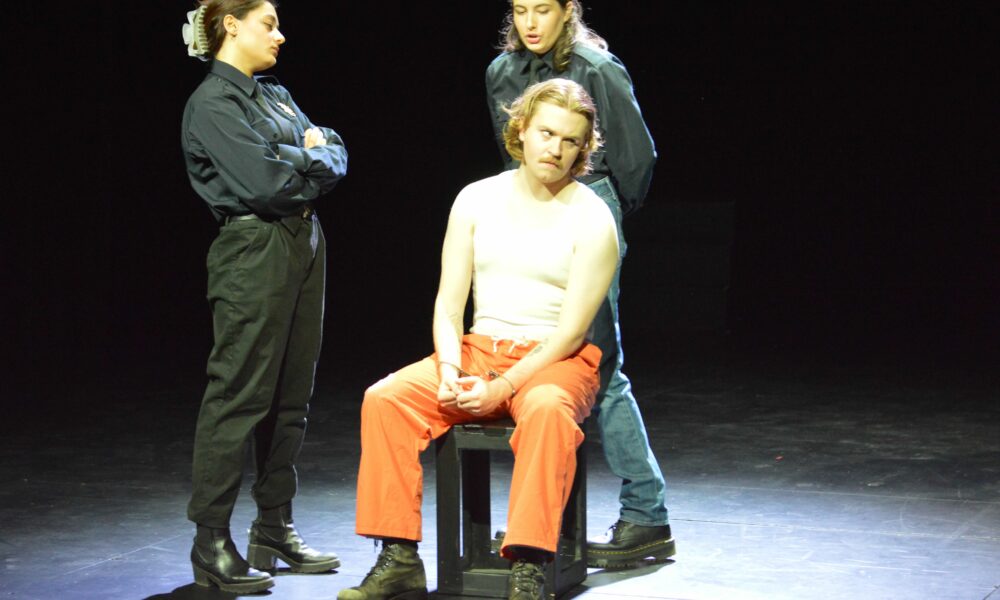The McGill Department of English Drama and Theatre Program presents Tom Fowler’s katzenmusic, a darkly compelling exploration of social inequality and civil unrest in the fictional town of Burnside. Told in reverse chronological order, the play recounts a cat massacre that devastates the town and forever tarnishes its reputation. Each scene allows viewers to piece together the truth as they witness events unfolding backwards, observing consequences before motives.
The reverse storytelling creates a tale that individualizes as it progresses. The show opens with a cacophony of rings and answering machines as townspeople rush hurriedly across the stage, talking over each other. Confusion and anxiety permeate the first half of the play, as news headlines spin an easy narrative around the tragic event. As the story rewinds, however, the underlying issues in Burnside are revealed. The massacre was not an isolated act of brutality, but rather the climax of long-simmering frustrations among Burnside’s working-class residents, many of whom lost their jobs after the abrupt closure of a large car manufacturing plant. Fed up with neglectful and opportunistic landlords, dishonest politicians, fruitless peaceful protests, and a media parade creating a circus out of their lives, ordinary people make the pivotal decision to murder the cats of the elite and powerful. This unique plot development forces audiences to confront the individuals at the core of such a large tragedy.
The production is a collaboration between undergraduate students and faculty members of the English Department. Students worked closely with professors not only as performers but also in courses on costume making, set design, and lighting, gaining hands-on experience in all aspects of mounting a show. The director, Sean Carney, worked closely with U3 Drama and Theatre student Celeste Gunnell-Joyce, who acted as assistant director. Having leadership in the hands of both faculty and students ensured the collaborative nature of the production and provided students with the valuable and unique opportunity to develop their creativity under the guidance of experienced professionals.
“There’s a lot of real mentorship and apprenticeship going on [….] That’s been really incredible,” Gunnell-Joyce said in an interview with The Tribune.
The play’s political message gains strength from its large ensemble of characters, inviting viewers to contemplate a diverse array of perspectives. With 15 performers in the production, the cast undertook the complex task of representing multiple characters in the show. This choice highlighted the community at the heart of the turmoil. There was no lead character to follow, just a web of townspeople populating each scene, sometimes as victims, sometimes as perpetrators. The lack of a clear moral distinction between characters complicated the narrative and further encouraged audiences to evaluate the situation themselves rather than seek convenient answers.
I was particularly impressed with the creation of imagined sets on the stage. Though the stage was void of any set or decor, each scene was vivid and clear in its setting. This was thanks to clever choreography, staging, spotlights, and the accomplished physical acting of the young cast.
The final scene centres on the moral ambiguity of all the characters. It focuses on the landlord, who is largely responsible for the chaos. He addresses a conference, proudly recounting his rise from a low-income background in Burnside. He built his success by buying cheap housing and neglecting to pay maintenance fees, profiting off the backs of those whom the audience had watched suffer. The play avoids villainizing this specific individual, whose corrupt greed resulted from an ordinary desire to prosper; instead, this scene confronts viewers with the system that platforms and enables his actions, forcing the realization that towns like Burnside exist everywhere.
katzenmusik continues its run in Moyse Hall in the Arts Building from November 26 to 28.








